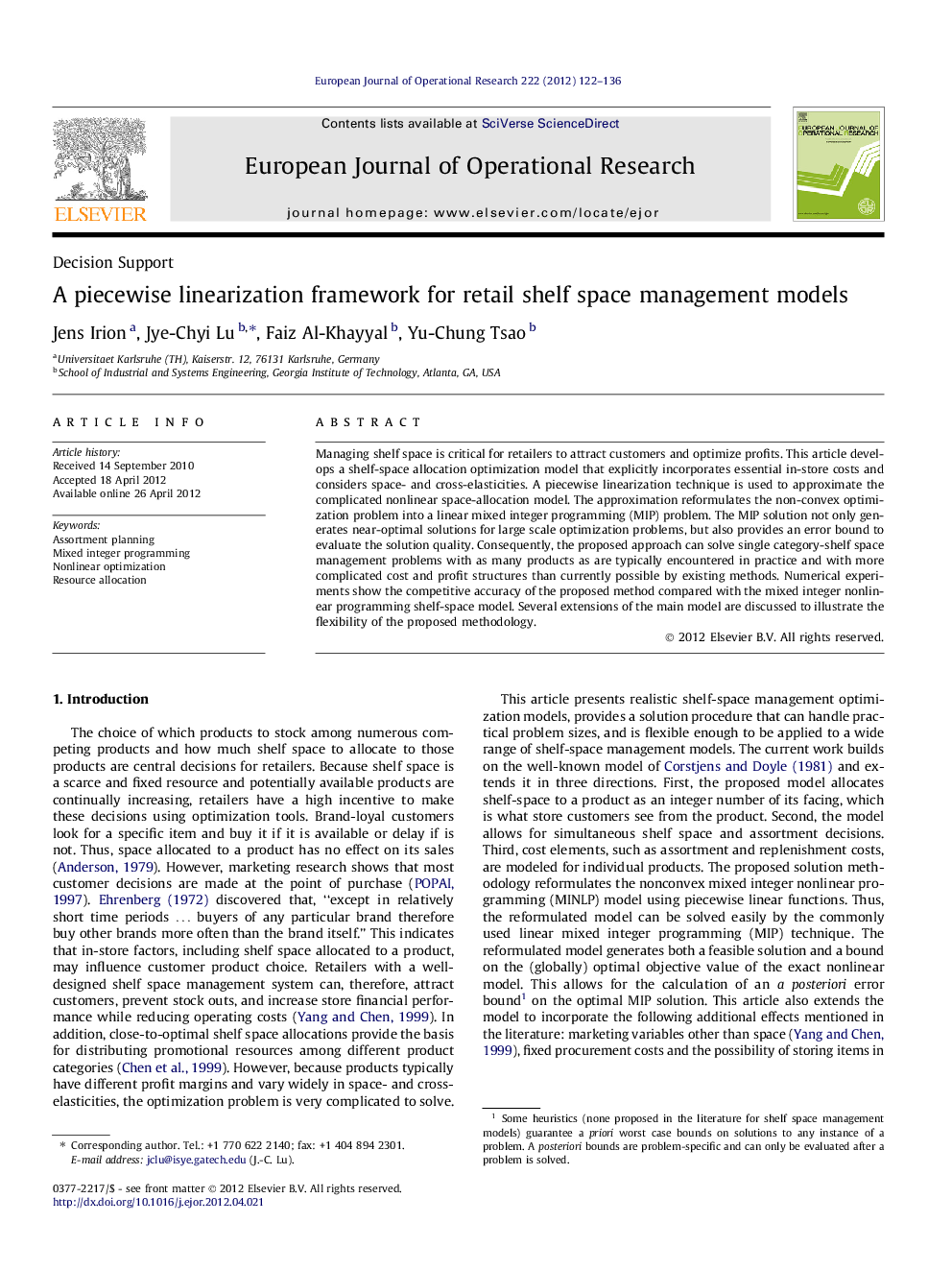| Article ID | Journal | Published Year | Pages | File Type |
|---|---|---|---|---|
| 478381 | European Journal of Operational Research | 2012 | 15 Pages |
Managing shelf space is critical for retailers to attract customers and optimize profits. This article develops a shelf-space allocation optimization model that explicitly incorporates essential in-store costs and considers space- and cross-elasticities. A piecewise linearization technique is used to approximate the complicated nonlinear space-allocation model. The approximation reformulates the non-convex optimization problem into a linear mixed integer programming (MIP) problem. The MIP solution not only generates near-optimal solutions for large scale optimization problems, but also provides an error bound to evaluate the solution quality. Consequently, the proposed approach can solve single category-shelf space management problems with as many products as are typically encountered in practice and with more complicated cost and profit structures than currently possible by existing methods. Numerical experiments show the competitive accuracy of the proposed method compared with the mixed integer nonlinear programming shelf-space model. Several extensions of the main model are discussed to illustrate the flexibility of the proposed methodology.
► This article develops a shelf space allocation optimization model. ► Consider space- and cross-elasticities demand. ► Use a piecewise linearization technique to approximate the space-allocation model. ► Can solve single category shelf space management problems with many products. ► Numerical experiments show the competitive accuracy of the proposed method.
